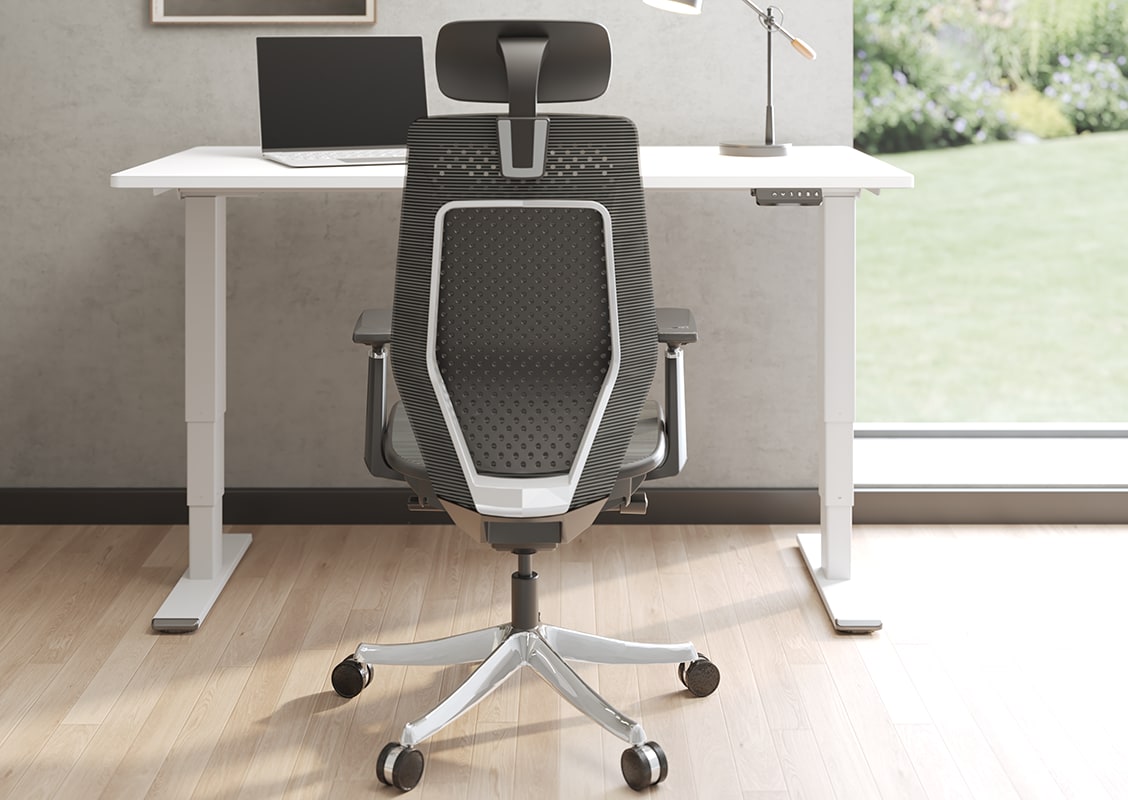The contemporary workplace is undergoing a transformation driven by a deeper understanding of human physiology and psychology. As organizations recognize the intrinsic link between employee well-being and productivity, the layout and placement strategies of ergonomic chairs within office environments have taken center stage.
This alternative introduction highlights the paradigm shift in office design, where the arrangement of ergonomic chairs is no longer just a functional necessity but a strategic approach to fostering a healthier and more efficient workspace. Therefore, in this post, we'll explore how to create a better work environment by placing ergonomic chairs strategically in offices for improved comfort and productivity.
Ergonomic Principles
Ergonomic chairs embody the core tenets of ergonomic principles – prioritizing comfort, functionality, and support. These chairs are meticulously engineered to seamlessly adapt to the user's body, facilitating proper spinal alignment, minimizing muscle strain, and preempting musculoskeletal disorders.

Integral to their design are key ergonomic features, including adjustable seat height, lumbar support, customizable armrests, and a reclining mechanism. These principles hold paramount importance when orchestrating the layout and placement of ergonomic office chairs within a workspace.
The crux of ergonomic chair design revolves around promoting optimal posture and spinal alignment. Through adjustable seat heights, users can attain the ideal position where feet rest flat on the ground, ensuring a 90-degree angle at the hips and knees – a cornerstone of spinal health. Complementing this, lumbar support curtails lower back strain, fostering better posture.
Meanwhile, the chair's adaptability extends further with customizable armrests, alleviating strain in the shoulders and arms, and a reclining mechanism that provides respite from extended periods of static sitting, enhancing circulation and reducing muscle fatigue.
Understanding these principles is pivotal in optimizing the layout and arrangement of ergonomic office chairs. Their strategic integration, whether in individual workstations for prolonged tasks or in collaborative spaces to foster dynamic discussions, weaves a tapestry of well-being and productivity.
Ergonomic chairs are not mere furniture; they exemplify a deep comprehension of human kinetics, harmonizing form with function. As workspaces embrace this synergy, ergonomic chairs emerge as sentinels of employee well-being and productivity, underscoring the notion that optimal design is a fundamental investment rather than a superficial amenity.
Layout Strategies
Spacing and Accessibility: The arrangement of ergonomic chairs should ensure adequate spacing between each chair to prevent a cramped atmosphere. Ample space allows employees to move around freely without feeling restricted. Additionally, chairs should be easily accessible without the need to squeeze between tight spaces, which can lead to discomfort and accidents.

Natural Light and Views: Placing ergonomic chairs near windows or areas with access to natural light can significantly impact employee well-being. Exposure to natural light not only improves mood and reduces eye strain but also promotes a healthier circadian rhythm. Moreover, providing views of outdoor landscapes can offer visual relief and mental rejuvenation during the workday.
Collaborative Zones: In areas where collaboration is encouraged, such as meeting rooms or creative spaces, consider incorporating ergonomic chairs that foster interaction. Office chairs with swivel bases and casters can facilitate easy movement, enabling employees to engage in discussions and group activities more effectively.
Noise Considerations: Ergonomic chair placement should take into account noise levels within the office environment. Chairs positioned near noisy equipment or high-traffic areas can lead to increased stress and reduced concentration. Therefore, strategic placement should minimize the impact of unwanted noise on employees' focus and productivity.
Task-Specific Placement: Different tasks require varying levels of support and comfort. For example, ergonomic chairs in workstations where employees spend long hours at their computers should prioritize features like adjustable armrests and lumbar support. In relaxation areas or break rooms, chairs with a more relaxed design may be suitable to encourage relaxation and socialization.
Placement Strategies
Individual Workstations: Ergonomic chairs at individual workstations should be positioned to support a neutral sitting posture. The chair's backrest should provide proper lumbar support, while the chair's height should allow the feet to rest flat on the floor, forming a 90-degree angle at the hips and knees. Armrests should be adjusted to comfortably support the user's arms while typing.
Collaborative Spaces: In collaborative spaces, ergonomic chairs can be placed around tables to encourage teamwork. Chairs with swivel bases can facilitate easy communication between team members. Consider clustering chairs in groups of three to five to promote a sense of unity and encourage brainstorming.
Reception Areas: Ergonomic chairs in reception or waiting areas should prioritize both comfort and aesthetics. These chairs should provide a welcoming and inviting atmosphere for visitors while also ensuring proper posture support during shorter periods of sitting.
Conclusion
The layout and placement of ergonomic chairs in the office environment play a pivotal role in shaping employee comfort, productivity, and well-being. By adhering to ergonomic principles and employing thoughtful strategies, organizations can create workspaces that not only enhance physical health but also contribute to a positive workplace culture.
The proper arrangement of ergonomic chairs promotes natural movement, encourages collaboration, and reduces the risk of musculoskeletal issues. As the understanding of the relationship between workspace design and employee satisfaction continues to evolve, the importance of ergonomic chair placement strategies remains central to creating thriving, efficient, and employee-centric office environments.